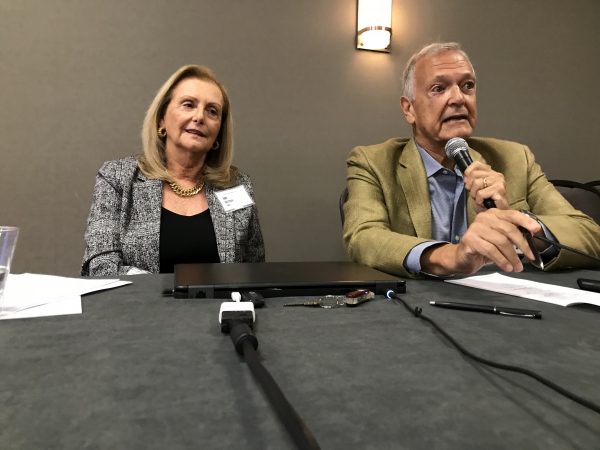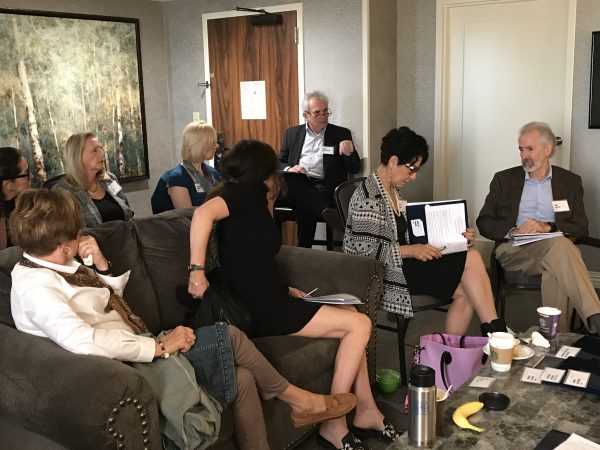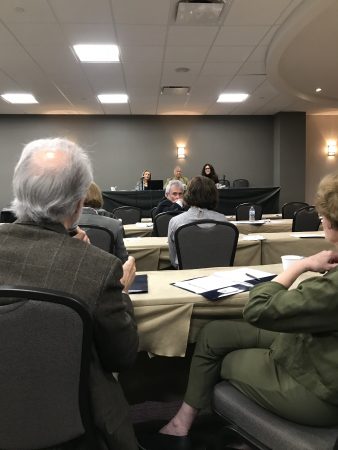
David Scharff steps back into presenter mode this morning. He is talking about Pichon Rivière’s concept of el vinculo, translated as “link”. David is excited to have found a theory that goes beyond Freud who sees development as instinctually driven, linear and predestined in the individual, and beyond object relations theory which sees development arising from the need to relate expressed in internal relationships being built in interaction in external relationships to Pichon Rivière’s more encompassing view of individual and group, self and society. Pichon Rivière focused on the area between two people as well. David tells that Pichon Rivière described the link as a feature of the inside, the outside and the area in between, all connected with experience of previous and future generations on the perpendicular post of a cross and connected to social and cultural associations in the present on the horizontal arm of the cross. We can imagine the link as a network of connections, an endless, interlocking dynamic ring spinning around in space and along time, and it is into this link people are born, and which they change and are changed by as they express their needs for love, safety, nurture and knowing.

Introducing Joachin Pichon Rivière, social psychologist and organizational consultant (and son of Enrique), David announced that in tomorrow morning’s open lecture, Joachin will present Pichon Rivière’s concept of the link in what he called “operative groups” (work and affiliate groups) in institutions.

Until then, we are following Lea Setton’s application of Pichon Rivière’s theory in family therapy. She shows how a family suffers from a major loss. Various family members from time to time become the spokesperson or the symptom bearer for the family wide loss in the present and its reverberations in past trauma and predictor of fears of future failure and shame. Over the years, the family engages with the analyst as the depositary for the family legacy and potential. Their therapy follows a spiral process in which the analyst relates to the symptom, the existent fixed pattern of reaction, makes interpretation which creates a disruption, after which the family enters an emergent pattern with new possibilities for reaching understanding and transformation.

